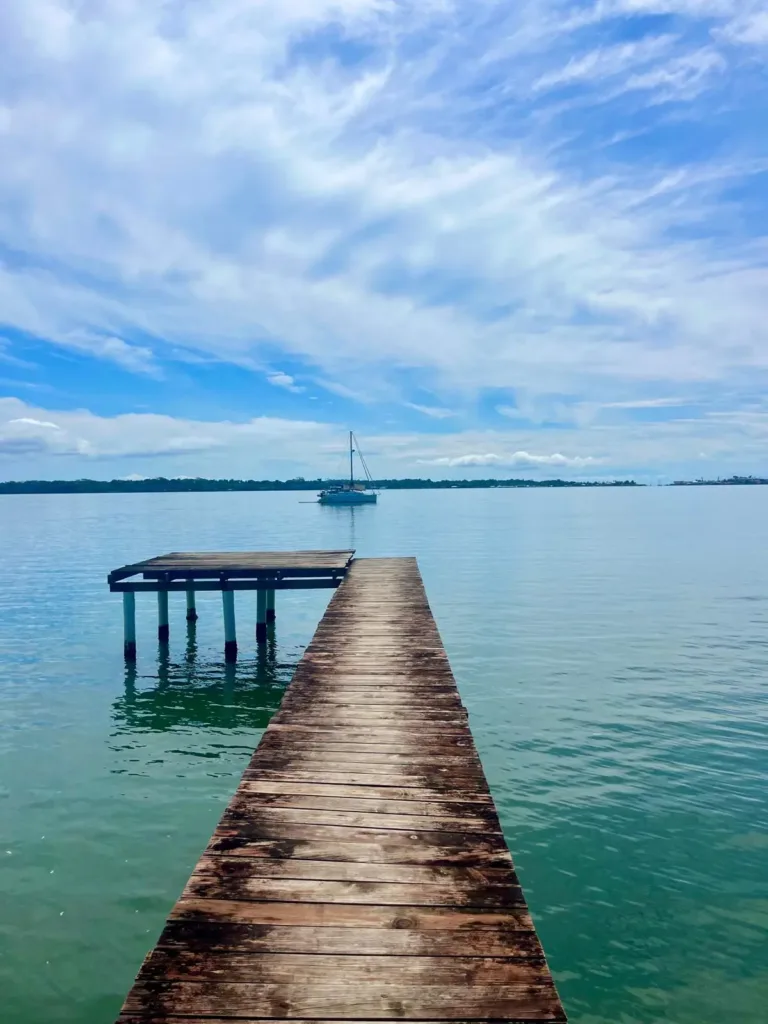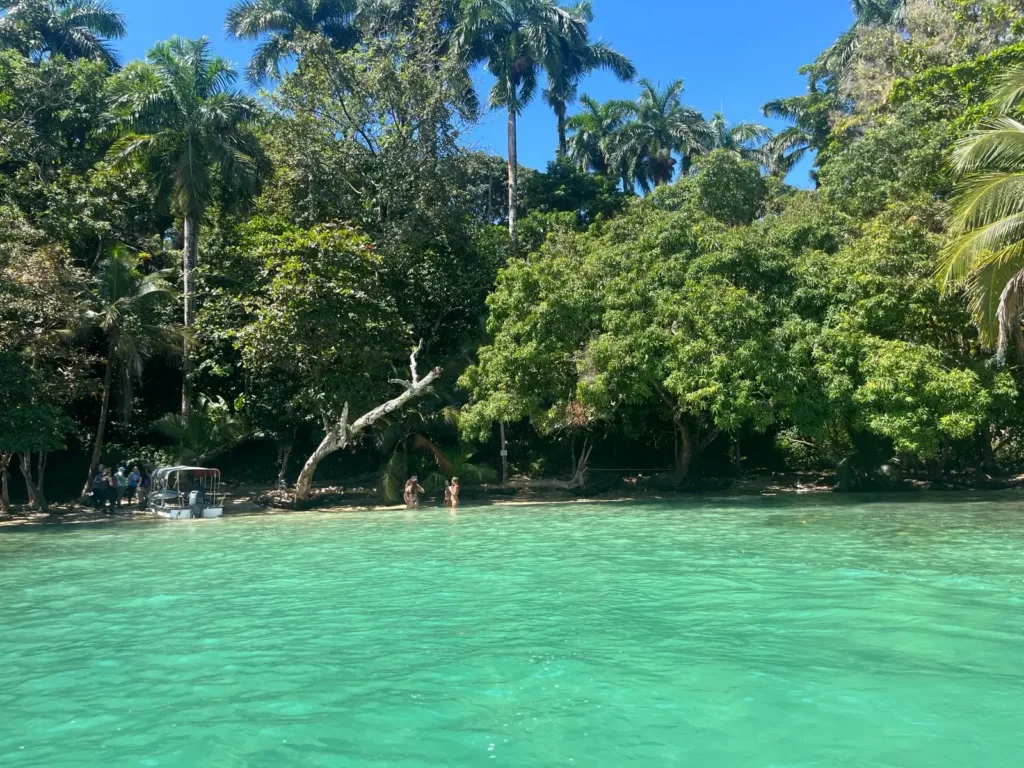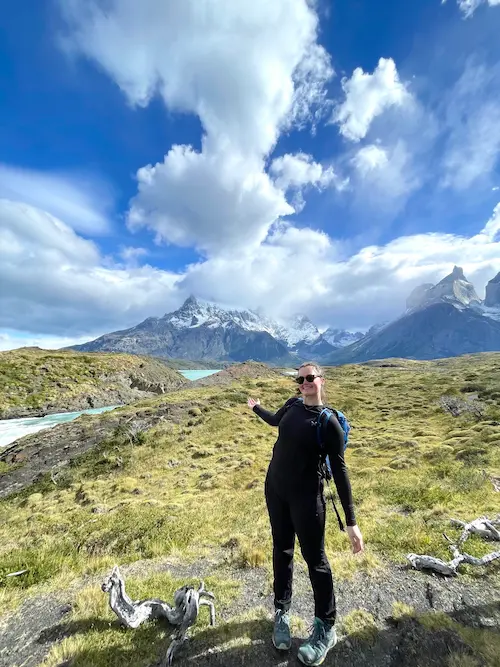Three Days of Rain? Am I on South Caicos?
Thirty-four students arrived last Monday in TCI!

TCI Ferry bringing 33 very excited students. One arrived a day late due to flight cancellations
Typically students are greeted by a warm Caribbean sun and blue skies, but not this group. It rained the first three days of program.

Town tour in torrential rain
And by rain, I mean RAIN! For alumni reading this, maybe you had three days of rain your whole semester…The sun is finally shining and everyone is excited to be in the water – field exercises, Open Water SCUBA course and recreational dives.
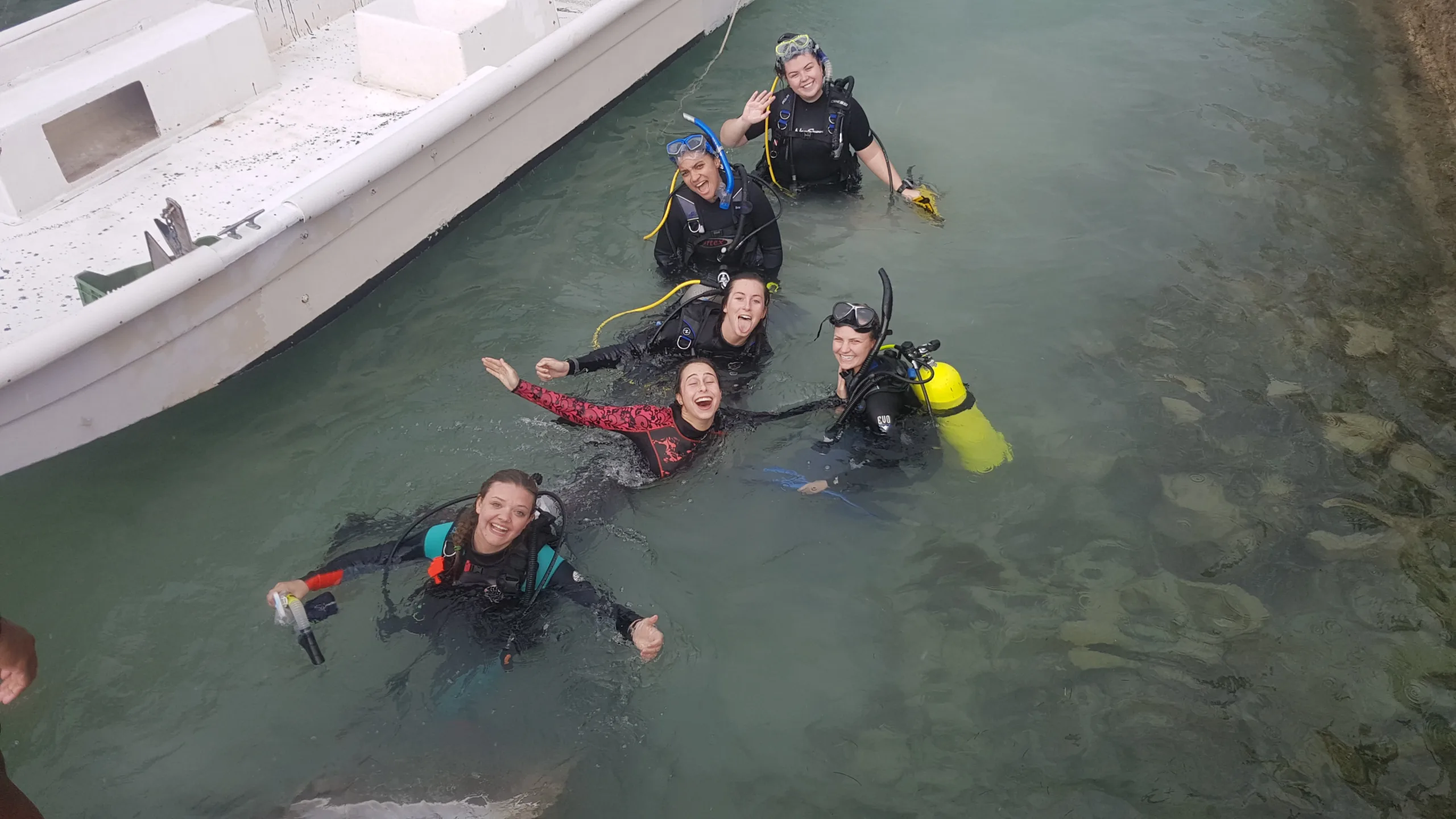
Already certified SCUBA divers doing orientation dive in swim zone
Everyone is excited to explore the underwater world, no matter what time day or night.
In Marine Ecology, students are learning about mangrove organisms and their interactions. Today they are wading and snorkeling in the local mangrove systems to see these interactions. They are also learning about the conch and lobster fisheries and taking trips to the docks to meet fishermen.
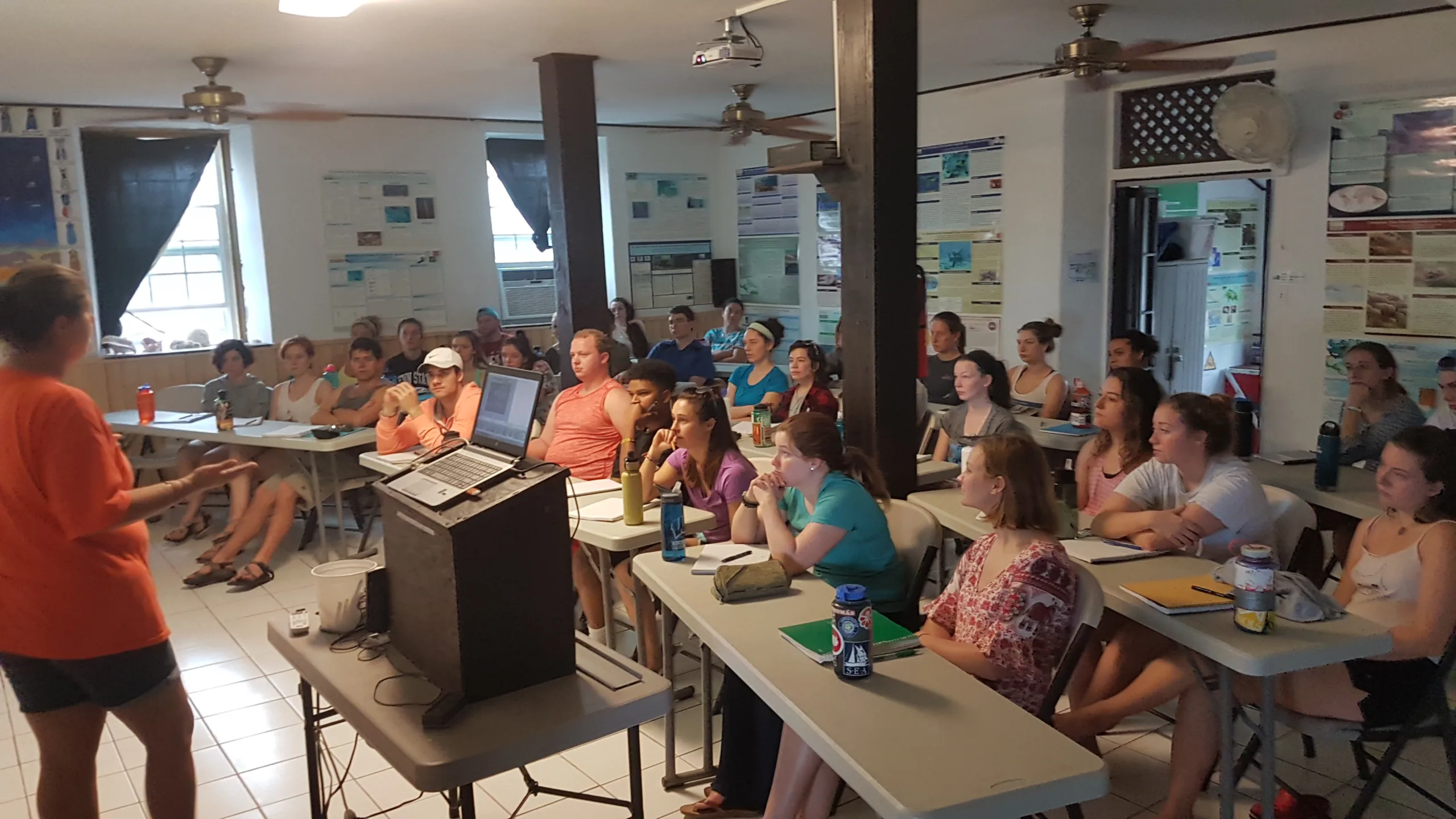
Students in the Resource Management course
Yesterday we were visited by community members to talk about the history of South Caicos as part of the Environmental Policy and Socioeconomic Value course. Community kids were waiting for over an hour on the first Saturday for swim lessons, crafts, and games.
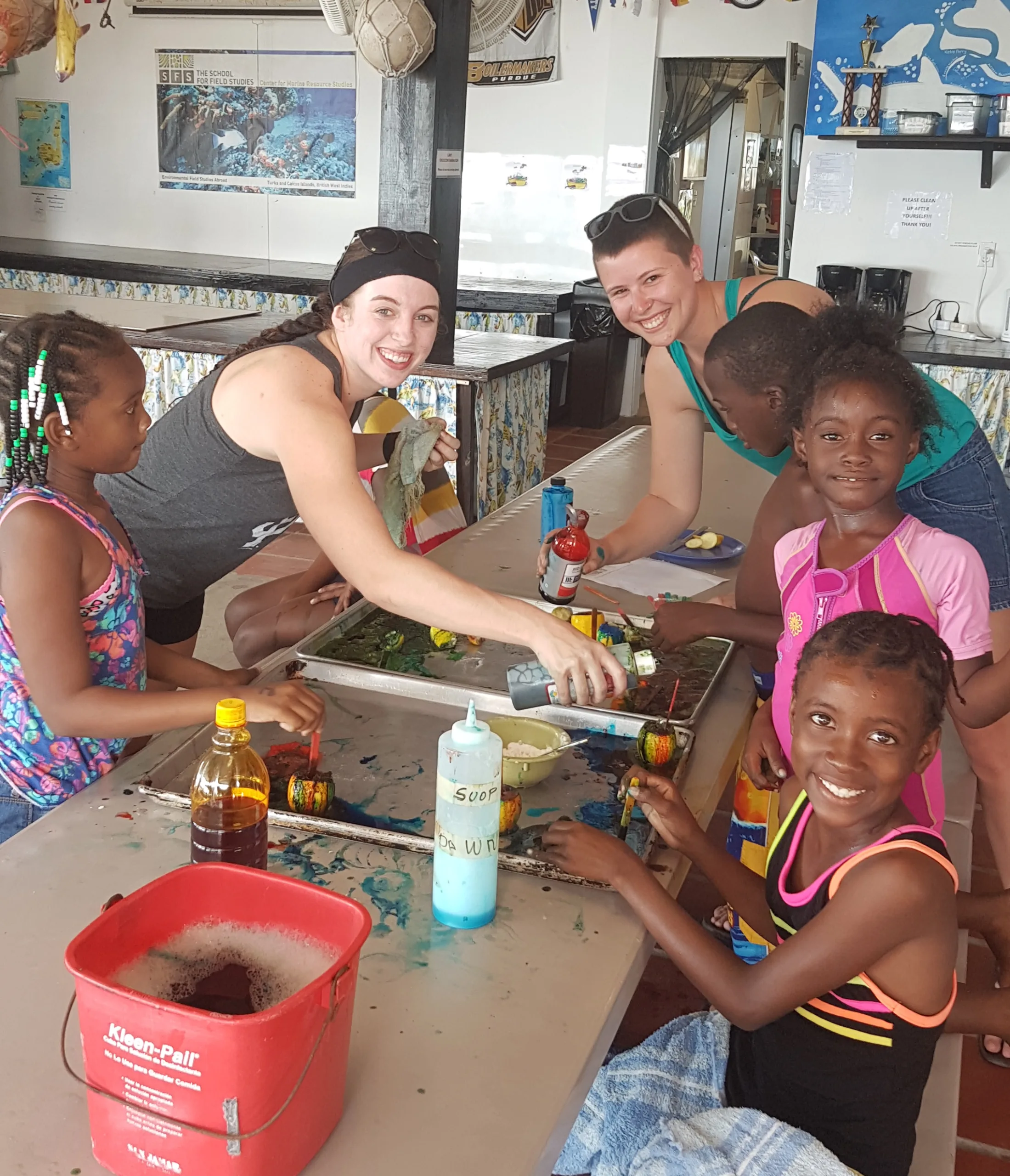
We were joined by nearly 50 children ages 5 to 16. We also participated in National Wetland Clean Up Day – collecting over 6 huge bags of trash from the mangroves.
This semester we are looking forward to recording whale songs as part of a grant from The Curtis and Edith Munson Foundation. Already we see the humpback whales breaching and hear them when we are diving. Humpback whales migrate between the Northeast US and TCI/Dominican Republic between January and March. Songs are used to identify pods. We are also continuing our reef assessment this semester. This is important as we are still seeing coral bleaching around the Caribbean, particularly the deeper reefs which are not as adapted to warmer temperatures.
News from the Center… This semester we welcome Lawre Doughton, Student Affairs Manager, Jourdan Bonnett, Dive Safety Officer, and Taylor Determan, Waterfront Intern. We bid farewell to Alex Kahn-Johnston, Student Affairs Manager, who contributed significantly to CMRS and the South Caicos community over the past year and a half. The roof in the commons area is being replaced, everyone will miss being rained on at meals. Several researches are expected to pass though South Caicos and we look forward to working with them on climate change impact to our reef systems. Finally, we are planning for the arrival of the TCSPCA in May – please support our four legged community members through the SFS website, and remember to designate “South Caicos Veterinary Services”
Related Posts
